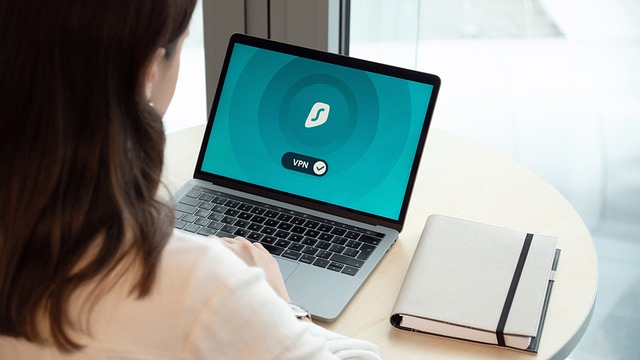
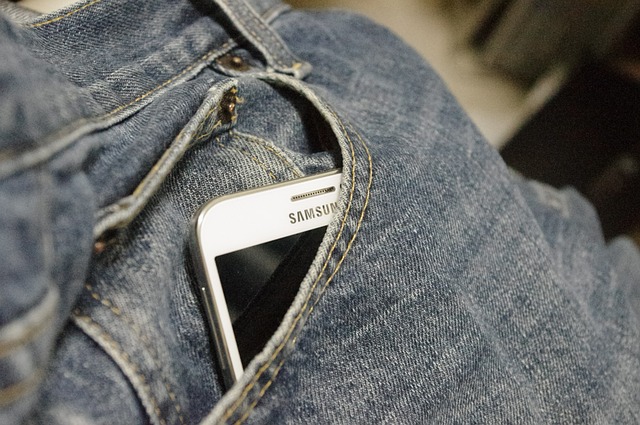
Samsung Galaxy Unpacked event: what to expect – The Verge
On February 1st, Samsung will hold its first in-person smartphone launch since the Galaxy S20 way back in February 2020. The company is widely expected to announce its new flagship smartphone lineup at the event, namely the Galaxy S23 series. But, as is tradition, Samsung will almost certainly include a couple of additional product announcements for good measure. Here’s a roundup of everything we’re expecting at the event, which is due to kick off at 1PM ET / 10AM PT / 6PM GMT on Wednesday.
Let’s start with some context because past events often provide clues about what’s coming. Samsung held a very similar launch event last year in February 2022 when it announced the Galaxy S22 lineup consisting of the S22, S22 Plus, and S22 Ultra. Alongside it, the company also launched new tablets, the Galaxy Tab S8, Tab S8 Plus, and Tab S8 Ultra.
This year, rumors suggest Samsung could shake things up a little bit. It’ll apparently still have a new lineup of smartphones to announce, but rather than tablets, it’s expected to have new laptops. The keen-eyed have spotted that Samsung’s reservation page for the upcoming launch specifically name-checks a new “Galaxy Book” alongside the new smartphone, and rumors suggest this will be a lineup of Galaxy Book 3 devices.
Here’s everything we think we know about what’s coming:
The Galaxy S23 series
This one’s easy, and not just because Samsung has announced a new flagship smartphone lineup like clockwork at the beginning of each year for a decade. No, it’s also easy because Samsung’s upcoming smartphones have more or less leaked in their entirety already, meaning we have a pretty good idea of their looks and specs even if we don’t yet know exactly how this will translate into real-world performance.
Like last year, the lineup looks to be three-strong. There’s the standard Galaxy S23, the slightly bigger S23 Plus, and finally, the high-end Galaxy S23 Ultra. Rumors suggest the first two will share similar designs and specs, while the third will be more visually distinct with at least one significant unique feature.
A leaked image claiming to show the S23 and S23 Plus.
Image: WinFuture
We’re referring, of course, to the S23 Ultra’s main camera, which has consistently been rumored to be using a high-resolution 200-megapixel main sensor. That’s almost double the 108-megapixel sensor found in last year’s Galaxy S22 Ultra. As my colleague Allison Johnson wrote last August, higher resolution sensors like these matter because they mean phones can bin more pixels together to gather more light and produce brighter, more detailed shots. The exact sensor is expected to be Samsung’s ISOCELL HP2, which Samsung announced just weeks ago.
Alongside this 200-megapixel sensor, a leaked spec sheet suggests the Galaxy S23 Ultra will have three additional cameras, a 12-megapixel ultrawide, a 10-megapixel telephoto with a 3x optical zoom, and another 10-megapixel telephoto with a 10x optical zoom. It amounts to a significantly better camera system than both the Galaxy S23 and Galaxy S23 Plus, whose own leaked spec sheets suggest will both have triple-camera systems consisting of 50-megapixel main sensors, 12-megapixel ultrawides, and 10-megapixel telephotos.
Leaked images suggest it won’t just be the camera systems that distinguish the S23 and S23 Plus from the S23 Ultra but their designs as well. The Galaxy S23 Ultra will seemingly have square corners and an accompanying S Pen stylus, reiterating its status as the spiritual successor to Samsung’s discontinued Galaxy Note phones. Meanwhile the Galaxy S23 and S23 Plus have much softer rounded edges, even if they’ve ditched the camera bump that distinguished the S22 and S22 Plus from the S22 Ultra last year.
A leaked image showing the S23 Ultra’s squared-off design next to the S23 and S23 Plus.
Image: WinFuture
Next up, screens. As its name suggests, the Galaxy S23 is the smallest of the three phones, with a 6.1-inch 1080p 120Hz OLED display. The S23 Plus is slightly bigger at 6.6 inches, though its screen specs are otherwise largely the same. Finally, the S23 Ultra has a larger screen still at 6.8 inches, and importantly, it bumps the resolution to 1440p. It’s still OLED and still 120Hz.
Those same leaked spec sheets we mentioned earlier suggest all three phones are going to be powered by Qualcomm’s flagship Snapdragon 8 Gen 2 processor in Europe, and historical precedent suggests we’ll see the same processor used in North America as well. What’s interesting is that there’s no sign of Samsung’s own Exynos processors in the Galaxy S23 lineup, which the company has historically used to power its phones in select regions around the world like Europe and India. Qualcomm suggested as much in an earnings call last year when chief financial officer Akash Palkhiwala said Qualcomm’s processor share would increase from “75 percent in G S22” to “global share in G S23.”
The Galaxy S23 could ship globally with Snapdragon
The rest of the lineup’s specs appear to be broadly consistent with previous Samsung flagships and the industry at large. We’re looking at between 8 and 12GB of RAM and 256GB to 1TB of storage in the Ultra, while the two other models will reportedly only ship with 8GB of RAM and between 128 and 512GB of storage. Battery capacities range from 3,900mAh to 5,000mAh across the three phones, with 45W fast charging on the Plus and Ultra and 25W on the base S23.
In terms of pricing, internal Verizon documents posted to Reddit suggest we’re looking at a $799.99 starting price for the Galaxy S23, $999.99 for the Galaxy S23 Plus, and $1,199.99 for the Galaxy S23 Ultra, which is in line with last year’s models. European buyers might not be so lucky, however. In countries like Spain and Germany, leaked pricing suggests the starting prices may have increased by around €100 for certain models.
Galaxy Book 3
If Samsung’s reservation page is anything to go by, this year’s Galaxy S smartphone launch will be accompanied by a new line of Galaxy Book laptops. Rumors suggest we could see as many as five laptops announced, which MySmartPrice reports will be called the Galaxy Book 3, Book 3 360, Book 3 Pro, Book 3 Pro 360, and Book 3 Ultra. Last year, Samsung announced its laptops a little later in February at Mobile World Congress in Barcelona.
As you’d expect from its name, the Book 3 Ultra will reportedly be the highest-end model. According to leaker Ishan Agarwal, it’ll have a 16-inch 1800p OLED display, an Intel i9-13900H CPU, an Nvidia RTX 4070 discrete GPU, 32GB of RAM, 1TB of storage, and will be compatible with Samsung’s S Pen stylus. Its touchscreen could also be thinner and lighter than usual thanks to having its touch sensors integrated directly into the panel.
The rest of the lineup is reportedly split between 360 laptops, with displays that can flip all the way around to be used tablet-style, and standard clamshell laptops. MySmartPrice reports that the Galaxy Book 3 Pro 360 will also be available with a 16-inch 1800p OLED display, with a choice of an Intel i5-1340P or i7-1360 CPU, integrated Intel graphics, 16GB of RAM, up to 1TB of storage, and stylus support. The non-360 Galaxy Book 3 Pro will reportedly be available with a 14-inch screen in addition to the 16-inch version.
Images of the Galaxy Book 3 Pro, 3 Pro 360, and 3 Ultra were leaked last year by The Tech Outlet, showing the laptops’ USB-C ports, headphone jacks, and charging ports.
There’s not much concrete information about what we can expect from the non-Pro Galaxy Book 3 laptops. MySmartPrice reports both will come with just a single screen size — 15 inches — but their exact specs are less clear. Judging by the rest of the lineup, however, we’d expect both to feature 13th Gen Intel processors.
But probably no tablets, earbuds, or smartwatches
It seems unlikely that we’ll see Samsung announce a new lineup of Android tablets, true wireless earbuds, or smartwatches alongside this year’s Galaxy S23 smartphones. The best evidence we have, frankly, is that if an announcement was coming, it’d probably have leaked by now.
Samsung did announce a new lineup of Tab S8 tablets alongside the Galaxy S22 last year. But according to a report from South Korean outlet The Elec, the company pushed back the release of its upcoming tablets (presumably the Tab S9) from their original December 2022 release date due to a drop in demand for consumer tech. According to The Elec, however, we should still expect a new generation of tablets to release this year, which means they might still launch alongside Samsung’s anticipated Galaxy Z Fold 5 and Z Flip 5 foldables at the company’s traditional summer launch. Just don’t hold your breath for an appearance in February.
Expect more later this year
It’s a similar story with Samsung’s true wireless earbuds. The company currently has between two or three lines of earbuds, depending on whether you think it’ll ever release a follow-up to the (in my opinion excellent) Galaxy Buds Live. The company last updated its Galaxy Buds Pro lineup in August last year with the Pro 2 and released the non-Pro Galaxy Buds 2 in August 2021. That suggests the latter is due for an upgrade this year but maybe not for a few months yet.
Finally, there are smartwatches, which last saw an update with last August’s Galaxy Watch 5 series. Samsung’s smartwatches have been on a 12-month release cadence for the past couple of years, meaning the most likely time we’ll see a Galaxy Watch 6 announced is in August 2023.
Samsung’s Unpacked event will be livestreamed over on its YouTube channel on Wednesday, February 1st, starting at 1PM ET / 10AM PT / 6PM GMT.
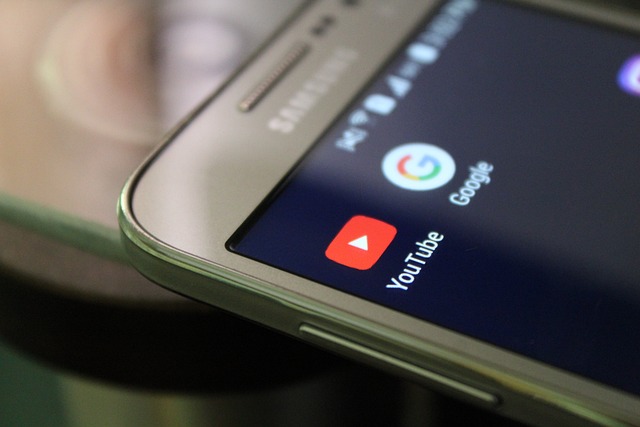
Samsung Galaxy A14 5G Review: A Phenomenal $200 Phone – WIRED
The most exciting smartphones aren’t the $1,200 flagships, with their minute upgrades that only slightly improve the camera from the prior year. No, it’s the cheap phones that have had my eyes. It’s remarkable seeing what features are trickling down from the high end, and how rapidly these handsets are improving. This is nowhere more evident than with Samsung’s Galaxy A14 5G.
This $200 unlocked Android phone is, frankly, phenomenal. For two Benjamins, you can get a smartphone that can handle most day-to-day tasks without acting frustratingly slow, a surprisingly decent camera system, a lengthy software update cycle, plus more than two-day battery life. The crazier thing is that Samsung manages to improve on the flaws of the A14’s predecessor—the Galaxy A13 5G—while cutting the price by $50. Consider my mind boggled.
Galactic Feat
Photograph: Samsung
The A14 5G looks a little plain, but it has a textured back that gives it a little more character than most budget phones. It certainly doesn’t feel as cheap as it is. The plastic rear design means that’s one less glass surface area you have to worry about. The only hardware flaw? This phone doesn’t have an IP rating, so it’s not dust or water resistant. You’ll want to be careful with it in the rain, near a pool, and at the beach.
The 6.6-inch LCD display has a 1080-pixel resolution which is sharper than the prior model, and it looks perfectly fine. I haven’t had trouble reading it on sunny days (not that we’ve had many here in New York recently), and it’s plenty sharp for gaming, reading, and watching all the TikToks my partner sends my way.
Speaking of displays, some cheap phones have started introducing high refresh rates into their respective screens—a flagship feature making its way down. Most smartphones used to have a 60-Hz screen, but by increasing the number of times the screen refreshes per second from 60 to 90 or 120, you get a more fluid experience and it makes the phone feel more responsive. (You can read about it in more detail here.) Samsung has retained the 90-Hz panel from the A13, which is nice, but it honestly is hard to tell. It doesn’t feel as buttery smooth as more powerful devices that can more regularly ratchet up the frames when you’re moving through the interface.
Performance is certainly a standout. Compared to a $170 phone I just reviewed, the Galaxy A14 5G is a godsend. I can actually juggle through all my apps without my blood pressure rising. This is thanks to the MediaTek Dimensity 700 5G and 4 GB of RAM inside. In my Geekbench benchmark tests, there’s a solid bump in performance over the A13 5G, which is surprising given the A13 5G has the same chipset and RAM. I suspect there’s just better optimization here. That’s easily reflected throughout my experience. I can play games like Alto’s Odyssey, CarX Highway Racing, and Dead Cells without noticing annoying hiccups.

Samsung’s Galaxy Book 3 OLED will use on-cell tech for a thinner touchscreen – The Verge
Samsung’s Galaxy Book 3 will feature an OLED panel that uses on-cell technology that embeds sensors directly into the display to create a thinner and lighter touchscreen. The company’s display-making arm announced that it has started to mass-produce the technology for notebooks and says it will come with “some models” of the “next-generation Galaxy Book series” (via ZDNET).
These panels use something called on-cell touch AMOLED (OCTA) technology. Instead of putting touch sensors on a “film” on the panel surface, it incorporates touch sensors directly into the panel, “reducing the thickness and weight” of the display. Companies including both Samsung and Apple already use this kind of technology in smartphones, and bringing it to laptops could help make them even more portable.
Samsung says the display will support 3K resolution with a 16:10 aspect ratio and 120Hz refresh rate, which tracks with leaked Galaxy Book 3 Ultra specs that indicate the device will feature a 16-inch 3K Super AMOLED panel. Samsung Display is expected to sell this technology to other manufacturers as well — a good sign for Apple’s rumored MacBook Pro that’s supposed to come with a touchscreen OLED display in 2025. Outside of Macs, the iPhone has long used similar technology, as the launch of the iPhone 5 saw the addition of a touchscreen that uses in-cell technology that allows for a thinner display.
Samsung’s expected to announce the Galaxy Book 3 at its Unpacked event on February 1st. It’s unclear whether the entire rumored Galaxy Book 3 Pro lineup will come with touchscreen OLED displays or if it’ll be limited to the higher-end Book3 Pro 360 and Book 3 Ultra models. Luckily, there’s only a little over a week until Galaxy Unpacked, where we’ll finally get a glimpse at all these new devices in addition to the heavily leaked Galaxy S23 phone.
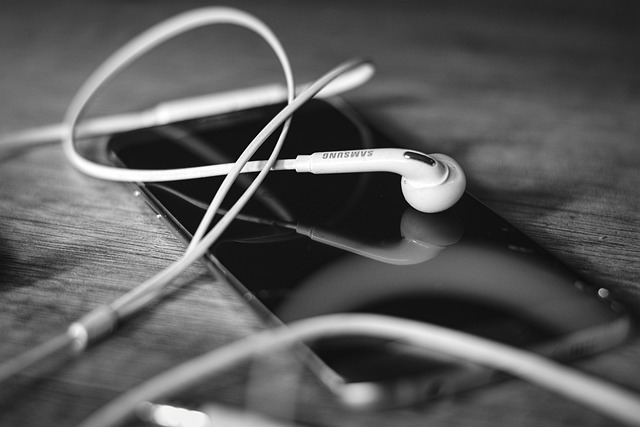
Samsung’s Galaxy Book 3 OLED will use on-cell tech for a thinner touchscreen – The Verge
Samsung’s Galaxy Book 3 will feature an OLED panel that uses on-cell technology that embeds sensors directly into the display to create a thinner and lighter touchscreen. The company’s display-making arm announced that it has started to mass-produce the technology for notebooks and says it will come with “some models” of the “next-generation Galaxy Book series” (via ZDNET).
These panels use something called on-cell touch AMOLED (OCTA) technology. Instead of putting touch sensors on a “film” on the panel surface, it incorporates touch sensors directly into the panel, “reducing the thickness and weight” of the display. Companies including both Samsung and Apple already use this kind of technology in smartphones, and bringing it to laptops could help make them even more portable.
Samsung says the display will support 3K resolution with a 16:10 aspect ratio and 120Hz refresh rate, which tracks with leaked Galaxy Book 3 Ultra specs that indicate the device will feature a 16-inch 3K Super AMOLED panel. Samsung Display is expected to sell this technology to other manufacturers as well — a good sign for Apple’s rumored MacBook Pro that’s supposed to come with a touchscreen OLED display in 2025. Outside of Macs, the iPhone has long used similar technology, as the launch of the iPhone 5 saw the addition of a touchscreen that uses in-cell technology that allows for a thinner display.
Samsung’s expected to announce the Galaxy Book 3 at its Unpacked event on February 1st. It’s unclear whether the entire rumored Galaxy Book 3 Pro lineup will come with touchscreen OLED displays or if it’ll be limited to the higher-end Book3 Pro 360 and Book 3 Ultra models. Luckily, there’s only a little over a week until Galaxy Unpacked, where we’ll finally get a glimpse at all these new devices in addition to the heavily leaked Galaxy S23 phone.

Samsung’s Galaxy Book 3 OLED will use on-cell tech for a thinner touchscreen – The Verge
Samsung’s Galaxy Book 3 will feature an OLED panel that uses on-cell technology that embeds sensors directly into the display to create a thinner and lighter touchscreen. The company’s display-making arm announced that it has started to mass-produce the technology for notebooks and says it will come with “some models” of the “next-generation Galaxy Book series” (via ZDNET).
These panels use something called on-cell touch AMOLED (OCTA) technology. Instead of putting touch sensors on a “film” on the panel surface, it incorporates touch sensors directly into the panel, “reducing the thickness and weight” of the display. Companies including both Samsung and Apple already use this kind of technology in smartphones, and bringing it to laptops could help make them even more portable.
Samsung says the display will support 3K resolution with a 16:10 aspect ratio and 120Hz refresh rate, which tracks with leaked Galaxy Book 3 Ultra specs that indicate the device will feature a 16-inch 3K Super AMOLED panel. Samsung Display is expected to sell this technology to other manufacturers as well — a good sign for Apple’s rumored MacBook Pro that’s supposed to come with a touchscreen OLED display in 2025. Outside of Macs, the iPhone has long used similar technology, as the launch of the iPhone 5 saw the addition of a touchscreen that uses in-cell technology that allows for a thinner display.
Samsung’s expected to announce the Galaxy Book 3 at its Unpacked event on February 1st. It’s unclear whether the entire rumored Galaxy Book 3 Pro lineup will come with touchscreen OLED displays or if it’ll be limited to the higher-end Book3 Pro 360 and Book 3 Ultra models. Luckily, there’s only a little over a week until Galaxy Unpacked, where we’ll finally get a glimpse at all these new devices in addition to the heavily leaked Galaxy S23 phone.
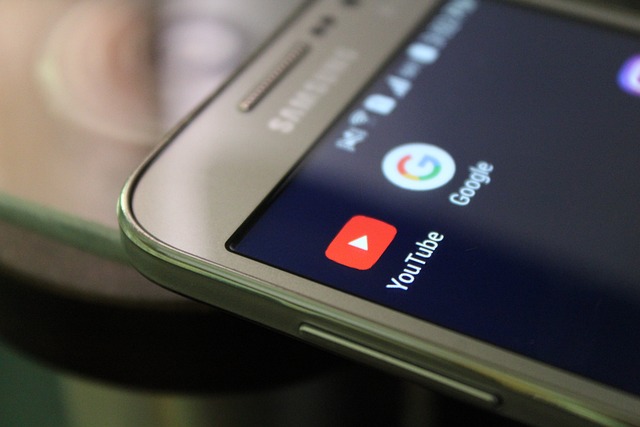
Samsung promotes the Galaxy S23 Ultra’s 200MP camera sensor (VIDEO) – PhoneArena
Last week Samsung introduced the ISOCELL HP2, the company’s third 200MP image sensor. The HP1 sensor is currently found in the Motorola Edge 30 Ultra and the Xiaomi 12T Pro. One of the differences between the three sensors is the pixel size used on each component. On the HP1, the pixel size is 0.64µm (micrometers) the HP2 has a 0.6µm pixel size. The pixel size is smaller at 0.56μm on the HP 3.
Samsung recently released a video for the ISOCELL HP2 which is expected to end up being deployed on the Galaxy S23 Ultra. The entire Galaxy S23 line should first greet the light of day when the new flagship models are unveiled on February 1st during the next Samsung Unpacked event. A leaked Verizon spec sheet for the series reveals that alongside the 200MP primary camera, the Galaxy S23 Ultra will sport a 12MP Ultra-wide camera and a 10MP Telephoto camera. Using its bag of AI tricks, Samsung will have the phone deliver 100x digital Space Zoom.
The ISOCELL HP2 uses 4:1 and 16:1 pixel binning
The HP2 uses dual vertical transfer gates allowing the sensor to store more light information to help reproduce colors more accurately. Images will remain sharp whether cropped or zoomed in. With Tetra2pixel technology, Samsung uses pixel binning to simulate different pixel sizes and resolutions based on the available lighting. Using 4:1 or 16:1 pixel binning, the sensor will produce 1.2μm 50-megapixel or 2.4μm 12.5-megapixel images depending on the environment. The more information that can be combined into one pixel, the better an image will be.
Reserve your Galaxy S23 pre-order now!
Samsung also mentions that its Super QPD feature allows users to take advantage of fast and accurate autofocus capabilities even in low-light conditions. All 200 million pixels are used in the focusing process. The sensor also reduces the dreaded shutter lag which is when too much time elapses from the time the shutter is pressed and the photo is captured.
It’s great when a rumor that we passed along turns out to be true. Last month, top-tier Twitter tipster Ice Universe (@UniverseIce) revealed that the Galaxy S23 Ultra would shoot 8K video at 30 frames per second (fps). And the Iceman (or Mr. Universe?) was 100% correct. The result should be smoother video compared to frames recorded with the Galaxy S22 Ultra. The latter recorded 8K video at 24fps. Having those additional 6 frames per second allows a video to jump around less as more motion is captured each second.
Galaxy S23 Ultra specs
Other methods employed by the HP2 sensor are being used to improve the dynamic range of photographs and videos allowing more detail to appear in shadows. It’s the difference between a shadow looking like a black blob or being able to see the details. As Samsung says, “More pixels. Epic details.” The proof will be in the pudding and the pudding will be available to Galaxy S23 Ultra buyers.
Based on the leaked Verizon spec sheets and previously reported rumors, the Galaxy S23 Ultra will feature a 6.8-inch QHD+ Dynamic AMOLED display with a 120Hz refresh rate. An overclocked 4nm Qualcomm Snapdragon 8 Gen2 SoC will be under the hood with the high-performance X-3 CPU core running at a clock speed of 3.32GHz compared to a clock speed of 3.2GHz on the regular variant. There will be two configurations of the p[hone available: 8GB of RAM with 256GB of storage, and 12GB of RAM with 512GB of storage.
A 5000mAh battery will keep the lights on and it will support 45W fast charging. Color options will be Phantom Black, Cream, Lavender, and Green. The S Pen digital stylus will come with the device out of the box and there will be housing on the device where it can be stored. Verizon will offer the phone starting at $1,199.99 or 36 monthly payments of $33.33.
While the Galaxy S23 series will be introduced on February 1st, pre-orders will start the same day with February 17th scheduled as the line’s release date.
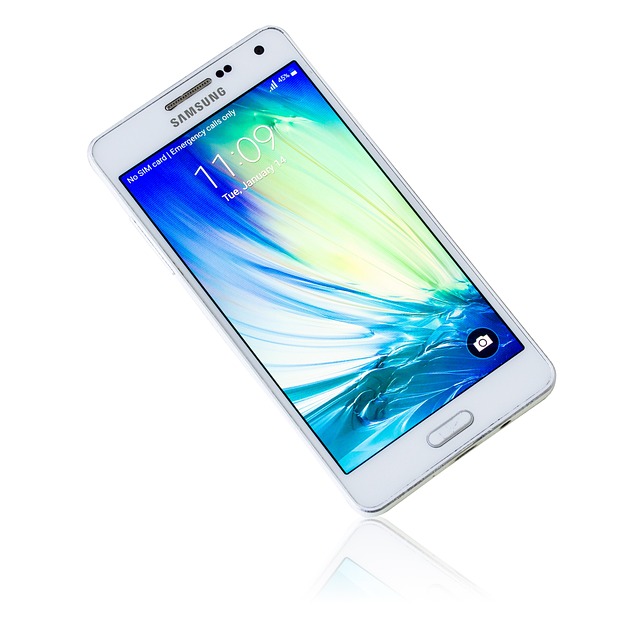
Samsung Galaxy S23 series US pricing leaks – GSMArena.com news – GSMArena.com
Following yesterday’s price leak for the Galaxy S23 series in Australia, a new post from Reddit shows what is allegedly US pricing from an internal Verizon document. The good news for potential S23 buyers in the US is that Samsung will not raise prices on the new models compared to last year’s S22 series.
Leaked Galaxy S23 sreies Verizon document
Taking a closer look at the leaked document Samsung Diamond appears to be the internal codename for the new S23 series with DM1 being the Galaxy S23 while DM2 is the S23+ and DM3 is the S23 Ultra. The baseline Galaxy S23 will start at $799 for the 8GB RAM and 128GB storage trim. Samsung will also offer an 8/256GB version of the S23 though the listing does not provide any pricing details.
Gaalxy S23 series US pricing (DM1=S23, DM2=S23+, DM3=S23 Ultra)
In fact, Galaxy S23+ will start at $999 and will bring 8GB RAM and 256GB storage as its baseline trim, which is a step up from the baseline S22+ which had 128GB storage. Samsung will also offer an 8/512GB model if you need extra storage.
Galaxy S23 Ultra starts at $1,199 which will get you the same 8GB RAM and 256GB storage as the baseline S23+ model. If you want to make the jump to 12GB RAM, you’ll have to pick up the model with 512GB of storage. The new S23 series will be available in Phantom Black, Cream, Green and Lavender colors. The rest of the spec sheet matches previously leaked info.
Source (Reddit)

The Samsung Galaxy Z Fold 5 may finally get the crease right – The Verge
The upcoming Samsung Galaxy Z Fold 5 could come with a much less visible crease thanks to a potential design change. According to a report on the Korean site Naver, Samsung could adopt a “droplet”-style hinge that allows the display to form a teardrop shape when closed, making for a much gentler curve that leaves less of a crease (via SamMobile).
While Samsung has certainly made improvements to the crease over the years, it’s still pretty noticeable on its fourth-gen foldables. Both the Samsung Galaxy Z Fold 4 and Galaxy Z Flip 4 use a “U”-shaped hinge design that puts the display at a sharper angle when closed. This creates a more prominent crease and also puts more stress on the display.
Other folding smartphones have already transitioned to a droplet-style hinge to avoid these issues, like the Oppo Find N2, which has a noticeably unnoticeable crease when unfolded, along with the third-gen Motorola Razr.
As noted by Naver, Samsung initially patented a teardrop hinge in 2016, although we don’t know why it hasn’t decided to utilize it until now. SamMobile speculates that Samsung wanted to wait until it could bring an IPX8 water resistance rating to the new display, which it first introduced to its third-gen folding devices in 2021. That could help makes Samsung’s folding phones stand out against Oppo’s Find N2 and the Motorola Razr, as neither device is rated for water resistance.
In addition to a more subtle crease, Naver reports that the Samsung Galaxy Z Fold 5 design could also make both halves of the display sit flat against each other when the phone’s shut, unlike previous generations of the Galaxy Z Fold that leave a small gap. This should (hopefully) make the device a little bit easier to fit in your pocket.
It’s still not clear whether Samsung will bring the droplet-style hinge to the Galaxy Z Flip 5, and we’re going to have to wait a bit longer to find out, as Samsung’s expected to reveal the new folding phones in August. At least we have next month’s Galaxy Unpacked event to look forward to, where the company will likely take the wraps off the Galaxy S23.

Leaked Samsung Galaxy S23 pictures show off new camera design – Ars Technica
Enlarge / The base-model Galaxy S23, which has a new camera design.
Samsung is gearing up to launch the Galaxy S23 soon, with an event already officially scheduled for February 1. Prepping for launch means there are plenty of opportunities for things to leak, and official S23 pictures have landed at WinFuture.
The pictures are right in line with the renders from OnLeaks shared several months ago. This year the Galaxy S line is picking up camera design queues from the Ultra model, going with individual camera lenses rather than a big corner camera block. We also get a look at the sides, which are still nicely rounded and should be a bit more comfortable to hold than flat-sided devices. WinFuture’s pictures are technically of the base model S23, though the S23 Plus should look identical. WinFuture says the available colors are “‘Phantom Black’ (black), ‘Botanic Green’ (green), ‘Mystic Lilac’ (pink/purple) and ‘Cotton Flower’ (white).”
The S23 Ultra is expected to look just like the S22 Ultra. That means it separates itself from the base model’s rounded-corner design and is instead an aggressively rectangular slab of glass, with flat edges on the top and bottom. The flat edges and hard corners give it more room to stow an S-Pen, which is the big addition to the more premium model.
As usual, the S23 line will come with spec upgrades. In the US, the phone will ship with the new Snapdragon 8 Gen 2 SoC. Globally, Samsung often ships Exynos to some regions, but the phone division has had a rocky relationship with Samsung’s chip division over the poor performance of Samsung’s in-house system-on-chip line. For the S22, the UK and Europe got the Exynos 2200. This year, that’s going to change, and that info is from a really good source: Qualcomm’s chief financial officer.
Advertisement
Enlarge / The side! At the top edge, you can see the rounded profile the entire band should have.
In Qualcomm’s last earnings call, the company said it “entered into a new multiyear agreement with Samsung, expanding the use of Snapdragon platforms for future premium Samsung Galaxy products globally.” Qualcomm CFO Akash Palkhiwala added that agreement meant “our share from 75% in [Galaxy] S22 goes up to global share in G S23.” What exactly “global share” means is up for interpretation, but there’s a good chance it means a 100 percent share of S23 devices, and flagship Exynos smartphones are dead.
For going all-in on Snapdragon, Samsung might get special treatment from Qualcomm. Samsung wasn’t on the list of Snapdragon 8 Gen 2 launch partners, which might be because it’s getting a special, higher-clocked edition of the chip.
Megapixels don’t matter regarding camera quality but don’t tell that to the S23 Ultra, which is expected to ship with a 200 MP main camera this year. The default mode will probably include “pixel binning” or merging multiple blocks of pixels, so the output likely won’t be a 200 MP image. Samsung has a couple of 200 MP sensor models floating around out there, so which one it will be isn’t clear.
Another rumor says the minimum base storage will get a nice bump to 256GB, which would be pretty sweet. Check back on February 1.

Leaked Samsung Galaxy S23 pictures show off new camera design – Ars Technica
Enlarge / The base-model Galaxy S23, which has a new camera design.
Samsung is gearing up to launch the Galaxy S23 soon, with an event already officially scheduled for February 1. Prepping for launch means there are plenty of opportunities for things to leak, and official S23 pictures have landed at WinFuture.
The pictures are right in line with the renders from OnLeaks shared several months ago. This year the Galaxy S line is picking up camera design queues from the Ultra model, going with individual camera lenses rather than a big corner camera block. We also get a look at the sides, which are still nicely rounded and should be a bit more comfortable to hold than flat-sided devices. WinFuture’s pictures are technically of the base model S23, though the S23 Plus should look identical. WinFuture says the available colors are “‘Phantom Black’ (black), ‘Botanic Green’ (green), ‘Mystic Lilac’ (pink/purple) and ‘Cotton Flower’ (white).”
The S23 Ultra is expected to look just like the S22 Ultra. That means it separates itself from the base model’s rounded-corner design and is instead an aggressively rectangular slab of glass, with flat edges on the top and bottom. The flat edges and hard corners give it more room to stow an S-Pen, which is the big addition to the more premium model.
As usual, the S23 line will come with spec upgrades. In the US, the phone will ship with the new Snapdragon 8 Gen 2 SoC. Globally, Samsung often ships Exynos to some regions, but the phone division has had a rocky relationship with Samsung’s chip division over the poor performance of Samsung’s in-house system-on-chip line. For the S22, the UK and Europe got the Exynos 2200. This year, that’s going to change, and that info is from a really good source: Qualcomm’s chief financial officer.
Advertisement
Enlarge / The side! At the top edge, you can see the rounded profile the entire band should have.
In Qualcomm’s last earnings call, the company said it “entered into a new multiyear agreement with Samsung, expanding the use of Snapdragon platforms for future premium Samsung Galaxy products globally.” Qualcomm CFO Akash Palkhiwala added that agreement meant “our share from 75% in [Galaxy] S22 goes up to global share in G S23.” What exactly “global share” means is up for interpretation, but there’s a good chance it means a 100 percent share of S23 devices, and flagship Exynos smartphones are dead.
For going all-in on Snapdragon, Samsung might get special treatment from Qualcomm. Samsung wasn’t on the list of Snapdragon 8 Gen 2 launch partners, which might be because it’s getting a special, higher-clocked edition of the chip.
Megapixels don’t matter regarding camera quality but don’t tell that to the S23 Ultra, which is expected to ship with a 200 MP main camera this year. The default mode will probably include “pixel binning” or merging multiple blocks of pixels, so the output likely won’t be a 200 MP image. Samsung has a couple of 200 MP sensor models floating around out there, so which one it will be isn’t clear.
Another rumor says the minimum base storage will get a nice bump to 256GB, which would be pretty sweet. Check back on February 1.




